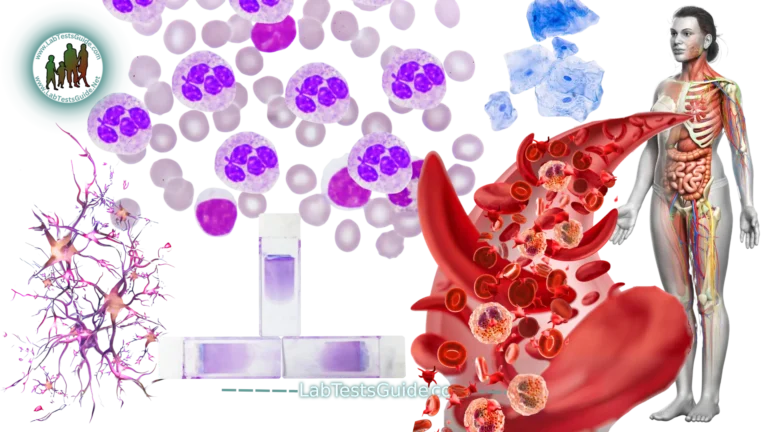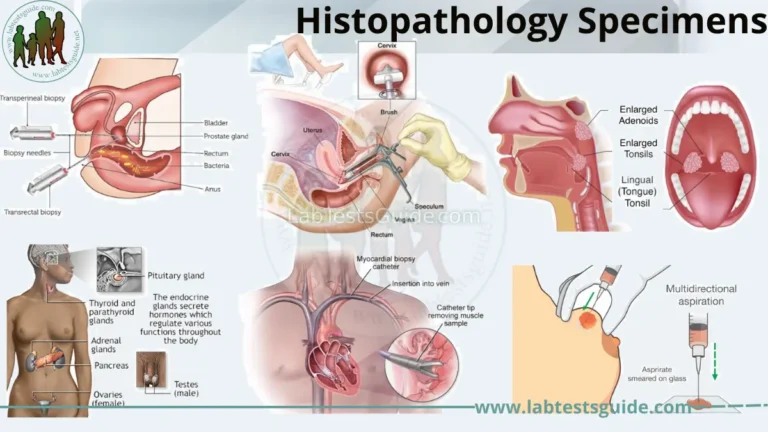Body fluids refer to the liquid substances that are found within and outside of the cells in the human body. These fluids play important roles in maintaining the proper functioning of the body’s systems and processes. Some examples of body fluids include blood, lymph, cerebrospinal fluid, synovial fluid, urine, sweat, and digestive juices. These fluids contain a variety of substances, including water, electrolytes, hormones, nutrients, waste products, and enzymes. Maintaining the proper balance and composition of body fluids is essential for good health, and imbalances can lead to a wide range of health problems.

Body fluids, bodily fluids, or biofluids, sometimes body liquids, are liquids within the human body. In lean healthy adult men, the total body water is about 60% (60–67%) of the total body weight; it is usually slightly lower in women (52-55%). The exact percentage of fluid relative to body weight is inversely proportional to the percentage of body fat. A lean 70 kg (160 pound) man, for example, has about 42 (42–47) liters of water in his body.
- Abdominal Fluid
- Amniotic fluid
- Ascitic Fluid
- Bile
- Blood
- Blood plasma
- Breast milk
- Cerebrospinal fluid
- Chyme
- CSF Fluid
- Cystic Fluid
- Earwax
- Hydrocele Fluid
- Interstitial fluid
- Lymph
- Mucus
- Pericardial fluid
- Peritoneal fluid
- Phlegm
- Pleural fluid
- Pus
- Rheum
- Saliva
- Semen
- Serum
- Sputum
- Synovial fluid
- Tears
- Thyroid Cyst Fluid
- Transudate
- Urine
- Vaginal fluids
- Vitreous Fluid
Abdominal Fluid:
Ascites is a condition in which fluid collects in spaces within your abdomen. As fluid collects in the abdomen, it can affect your lungs, kidneys, and other organs. Ascites causes abdominal pain, swelling, nausea, vomiting, and other difficulties.
Amniotic fluid:
Amniotic fluid is a clear, slightly yellowish liquid that surrounds the unborn baby (fetus) during pregnancy. It is contained in the amniotic sac
Ascitic Fluid:
Ascites is the build-up of fluid in the space between the lining of the abdomen and abdominal organs.
Bile:
Bile is a fluid that is made and released by the liver and stored in the gallbladder. Bile helps with digestion. It breaks down fats into fatty acids, which can be taken into the body by the digestive tract. Bile contains: Mostly cholesterol.
Blood:
Blood is a specialized body fluid. It has four main components: plasma, red blood cells, white blood cells, and platelets. Blood has many different functions, including: transporting oxygen and nutrients to the lungs and tissues.
Blood plasma:
Blood plasma is a light amber-colored liquid component of blood in which blood cells are absent, but contains proteins and other constituents of whole blood in suspension.
Breast milk:
Breast milk (sometimes spelled as breastmilk) or mother’s milk is milk produced by mammary glands located in the breast of a human female. Breast milk is the primary source of nutrition for newborns, containing fat, protein, carbohydrates (lactose and human milk oligosaccharides) and variable minerals and vitamins.
Cerebrospinal fluid (CSF):
Cerebrospinal fluid (CSF) is a clear, colorless, watery fluid that flows in and around your brain and spinal cord. Your brain and spinal cord make up your central nervous system. It controls and coordinates everything you do, including your ability to move, breathe, see think, and more.
Chyme:
chyme, a thick semifluid mass of partially digested food and digestive secretions that is formed in the stomach and intestine during digestion.
Cystic Fluid:
A cyst is a sac-like pocket of membranous tissue that contains fluid, air, or other substances. Cysts can grow almost anywhere in your body or under your skin. There are many types of cysts. Most cysts are benign, or noncancerous.
Earwax:
Earwax, also called cerumen, is made by the body to protect the ears. The ear wax has both lubricating and antibacterial properties.
Hydrocele Fluid:
A hydrocele is a type of swelling in the scrotum that occurs when fluid collects in the thin sheath surrounding a testicle. Hydrocele is common in newborns and usually disappears without treatment by age 1. Older boys and adult men can develop a hydrocele due to inflammation or injury within the scrotum.
Interstitial fluid:
Fluid found in the spaces around cells. It comes from substances that leak out of blood capillaries (the smallest type of blood vessel). It helps bring oxygen and nutrients to cells and to remove waste products from them.
Lymph:
Lymph is a clear-to-white fluid made of: White blood cells, especially lymphocytes, the cells that attack bacteria in the blood and body tissues. Fluid from the intestines called chyle, which contains proteins and fats.
Mucus:
Mucus is a protective substance that’s excreted from multiple areas of the body, such as the mouth, sinuses, throat, lungs, stomach, and intestines. Mucus itself consists of multiple constituents, but its major component is a substance called mucin.
Pericardial fluid:
Pericardial Fluid is the buildup of too much fluid in the double-layered, saclike structure around the heart (pericardium). The space between these layers typically contains a thin layer of fluid.
Peritoneal fluid:
A liquid that is made in the abdominal cavity to lubricate the surface of the tissue that lines the abdominal wall and pelvic cavity and covers most of the organs in the abdomen.
Phlegm:
Phlegm is mucus produced by the respiratory system, excluding that produced by the nasal passages. It often refers to respiratory mucus expelled by coughing, otherwise known as sputum.
Pleural fluid:
Pleural fluid is a liquid that is located between the layers of the pleura. The pleura is a two-layer membrane that covers the lungs and lines the chest cavity. Pleural fluid keeps the pleura moist and reduces friction between the membranes when you breathe.
Pus:
Pus is a whitish-yellow, yellow, or brown-yellow protein-rich fluid called liquor puris that accumulates at the site of an infection.
Rheum:
Rheum is a thin mucus naturally discharged from the eyes, nose, or mouth, often during sleep.
Saliva:
Saliva (commonly referred to as spit) is an extracellular fluid produced and secreted by salivary glands in the mouth. In humans, saliva is around 99% water, plus electrolytes, mucus, white blood cells, epithelial cells (from which DNA can be extracted), enzymes (such as lipase and amylase), antimicrobial agents (such as secretory IgA, and lysozymes).
Semen:
Semen, also known as seminal fluid, is an organic bodily fluid created to contain spermatozoa. It is secreted by the gonads (sexual glands) and other sexual organs of male or hermaphroditic animals and can fertilize the female ovum.
Serum:
Serum is the fluid and solute component of blood which does not play a role in clotting. It may be defined as blood plasma without the clotting factors, or as blood with all cells and clotting factors removed.
Sputum:
Sputum is mucus that is coughed up from the lower airways (the trachea and bronchi). In medicine, sputum samples are usually used for a naked eye examination, microbiological investigation of respiratory infections and cytological investigations of respiratory systems
Synovial Fluid:
Synovial fluid, also known as joint fluid, is a thick liquid located between your joints. The fluid cushions the ends of bones and reduces friction when you move your joints. A synovial fluid analysis is a group of tests that checks for disorders that affect the joints.
Tears:
Tears keep your eyes wet and smooth, and help focus light so you can see clearly. They also protect your eyes from infections and irritating things, like dirt and dust. Every time you blink, a thin layer of tears called a “tear film” spreads across the surface of your cornea (the clear outer layer of the eye).
Thyroid Cyst Fluid:
Fluid-filled cavities (cysts) in the thyroid most commonly result from degenerating thyroid adenomas. Often, solid components are mixed with fluid in thyroid cysts. Cysts are usually noncancerous, but they occasionally contain cancerous solid components.
Transudate:
Transudate is extravascular fluid with low protein content and a low specific gravity (< 1.012). It has low nucleated cell counts (less than 500 to 1000 /microliter) and the primary cell types are mononuclear cells: macrophages, lymphocytes and mesothelial cells.
Urine:
Urine, liquid or semisolid solution of metabolic wastes and certain other, often toxic, substances that the excretory organs withdraw from the circulatory fluids and expel from the body. The composition of urine tends to mirror the water needs of the organism. Freshwater animals usually excrete very dilute urine.
Vaginal Fluids:
Vaginal discharge is fluid that comes from the vagina. You might see this on the toilet paper when you wipe, or in your underwear. Normal vaginal discharge has several purposes: cleaning and moistening the vagina, and helping to prevent and fight infections.
Vitreous Fluid:
The vitreous is the gel-like fluid that fills your eye. It’s full of tiny fibers that attach to your retina (the light-sensitive layer of tissue at the back of the eye). As you get older, the fibers of your vitreous pull away from the retina. This is called vitreous detachment.
Possible References Used






